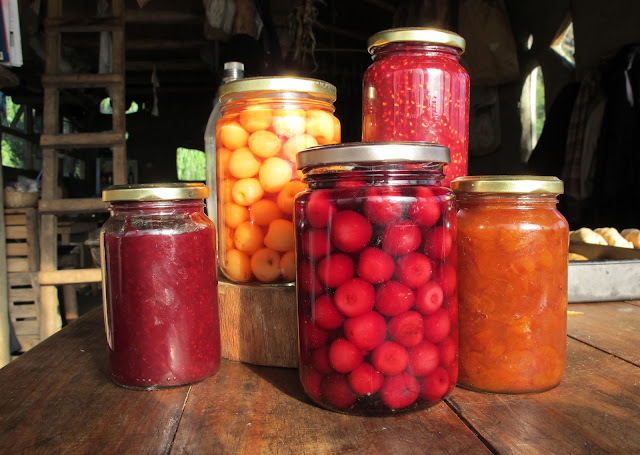 |
| Un arco iris sobre el bordé. Argentina en el fondo. |
¿Que onda amigos? Aprendía mucho castellano en las semanas pasadas. Voy a provar escribir todo en mi nueva lengua. Perdon, habrá mucho errores, pero creo que puedo comunicar mis adventuras suficientemente. Vamos a ver.
En la semana pasada me fui en dos mochila viajes a las montañas. Primero me fui a Motoco con Mariano, un amigo de El Hoyo, y Jenna de nuestra granja. Motoco es un valle muy escarpado. El camino seguía el Rio Motoco para 25 km a un refugio muy tranquilo y aislado. Encontramos un lugar muy especial donde el rio estrecha y formar una piscina 3-4 meteros profunda. Estaba un piedro perfecto para saltando. Estaban muchas vistas panoramica, de el valle y los picos escarpado y irregular. Dos horas más arriba del refugio, esta un bosque de alerces que son 2,000-3,000 años viejo.¡Que lindo!
El dia despues me volveré de Motoco, me fui a Chile para extender mi visa. Esto tiempo, me fui con Hernan (Bonsi) y Juan (Juanpi), algunos amigos de Buenos Aires, su amigo Leandro, Racheal y Jeremy de la granja. El camino empeza cerca Lago Puelo y seguiá el bordé de Puelo, y despues Lago Inferior. Los dos primeros dias, lluvió mucha. Caminamos en la lluvia toda la tarde, cruzando rios y arroyos a veces casi un metero profundo. Estuvimos todo mojado y frio. Acampamos circa el Gendarmaria, la pratrulla fronteriza Argentine. Lluvió toda la noche y la mayor parte de el dia siguiente. A veces, estuvo un camino duro, pero no estamos demasiado incómodo y tuvimos buena onda. La lluvia estaba necesitario porque estaban inccendios forestal cerca El Bolsón. Cerca el bordé de Chile, el bosque transforma en selva fria. Encotramos muchos lugares hermosos en el camino, que eran imposibles de describir con una foto. Esta tiempo, se tuve solo un vistazo de Chile, pero voy a volver. El ultimo dia caminamos más de 25 km. Por suerte, estaba soleado y podrimos ver el camino en una luz differente. Creo que me fui más de 100 km in 5 dias.
Vida en la granja esta bien. Ha habido muchas visitantes. Yo encontraba muchas personas muy buena. Nuestro trabajo ahora se centra en la cosecha de frutas. Haciámos dulce con cerezas, frambuesas, grosellas, y corintos. Semana siguente vamos a cosechar mas corintos para hacer chutney. Hay dos gallinas se sienta, y esperamos a tener casi 30 pollitos en una semana, mas o menos. Ahora trabajo en la huerta esta más tranquilo, y se hace muchas verduras. ¡Es la época de la temporada!
Algunas cosas desafortunadas haber pasado también. Mi amigo Patrick fue picado por una viuda negro. Despues de tres dias en el hospital, él se vuelve a la granja ayer. Hace mejorando, pero él tiene mucho, mucho dolor. ¡Queremos que te recupere rapidamente Patricio!
 |
| La selva fria de Chile. |
 |
| Lago Las Rocas. |
 |
| Lago Puelo en el dia soleado. |
 |
| Provando hacer seco en la mañana. |
 |
| Izquierda a derecha: Racheal, Jeremey, Bonsi, y Juanpi. |
 |
| ¿Que pasa? Abajo o arriba una pasarela en el camino a Motoco. |
 |
| Rio Motoco. Piscina natacíon a la izquierda. |
 |
| ¡Dulce dulce dulce dulce dulce! |












































